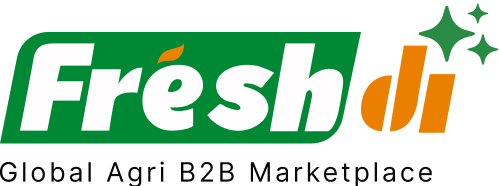Introduction – Current State of Play: The Frozen Fish Sector in Vietnam
Vietnam’s frozen fish market is at a pivotal point in 2025. The industry, known for its vast exports of pangasius and other seafood products, is currently navigating a web of international trade tensions, policy shifts, and evolving domestic demand.
The biggest recent shake-up? In September 2025, the U.S. National Oceanic and Atmospheric Administration (NOAA) denied Vietnam a “comparability finding” under the Marine Mammal Protection Act. This move puts Vietnamese frozen fish exports at risk, with a ban potentially taking effect on January 1, 2026. What’s the issue? The U.S. claims 12 Vietnamese fishing practices could harm marine mammals. Naturally, Vietnam pushed back. Minister of Industry and Trade, Nguyen Hong Dien, urged the U.S. to reconsider, warning of disrupted trade and impacted livelihoods. (Reuters)
As if that wasn’t enough, the U.S. slapped a 20% tariff on Vietnamese seafood exports starting August 7, 2025. This has led to a volatile export pattern—an initial rush to ship goods before the tariff kicked in, followed by a noticeable slowdown. (VASEP)
But it’s not all bad news. Vietnamese exporters are fighting back by diversifying markets. Exports to CPTPP countries like Japan, Canada, and Mexico spiked by 34% year-over-year in the first 7 months of 2025. Domestically, seafood consumption is booming. Supermarket chains are reporting nearly double the sales, particularly for ready-to-cook frozen fish and shrimp. (VASEP)
Of course, challenges persist. Rising logistics costs, stricter traceability rules, and fluctuating exchange rates are squeezing exporters. Climate factors also continue to loom large, though no specific weather events have been reported recently.
In this fast-moving landscape, staying informed and agile is more critical than ever. Whether you’re a distributor, retailer, or importer, understanding who the reliable players are in this evolving market is crucial.
Deep Dive – Market Movers: Recent Developments and Consequences
Vietnam’s frozen fish market is undergoing rapid transformation—let’s break down the current dynamics.
Firstly, the U.S. policy decisions have created immediate export barriers. With the looming seafood export ban and steep tariffs, Vietnamese producers are scrambling to find new trade routes. The ripple effect? A strategic pivot toward CPTPP nations and renewed focus on the ASEAN region.
Secondly, domestic demand has surged, especially for ready-to-eat frozen seafood. This marks a shift in consumer behavior, partly due to increasing affluence and health-conscious diets. The result? More investments in value-added processing and frozen packaging technologies.
Lastly, supply chain costs are rising. Between fuel prices, container shortages, and compliance with global food traceability regulations, producers are walking a tightrope. Some, however, are adapting by streamlining logistics and investing in vertical integration.
Freshdi, a B2B sourcing platform, has reported increased RFQ (Request for Quotation) activity from non-U.S. markets and a spike in supplier verification requests—signaling that buyers are doubling down on risk management and looking for credible partners in Vietnam.
Top 4 Verified Frozen Fish Suppliers in Vietnam – Navigating Current Market Realities
When the market gets tough, the tough suppliers get going. Based on export performance, certifications, and buyer reviews on Freshdi, these are the Top 4 Frozen Fish Suppliers in Vietnam in Quarter 3 of 2025:
1. Sohafood Corp (Sfc)
Sohafood Corp is a long-established player with a solid reputation for exporting high-quality frozen pangasius fillets and seafood mixes. Known for its HACCP and BRC certifications, Sohafood has managed to maintain strong sales despite the trade headwinds.
What makes them stand out? They’ve invested in value-added production lines and are actively expanding into European and Middle Eastern markets.
2. Quang Dai Seafood., Ltd
Quang Dai Seafood has carved a niche in both raw frozen and ready-to-cook frozen fish products. With a modern processing facility and a strong compliance track record, they’re a go-to for buyers looking for traceability and quality assurance.
Their responsiveness to the Freshdi platform’s RFQs also makes them a favorite among international buyers.
3. Hung Phuc One Member Co., Ltd
Hung Phuc is a rising star in Vietnam’s frozen fish scene. With certifications like HALAL, HACCP, and ISO, they cater to diverse markets including the Middle East and Southeast Asia. Their facility focuses on butterfly-cut pangasius and frozen whole fish—ideal for wholesalers and foodservice buyers.
Freshdi metrics show consistent buyer satisfaction and high repeat order rates.
4. THIENLONG SEAFOOD COMPANY LIMITED
THIENLONG SEAFOOD is known for premium cuts and organic frozen pangasius. They’re fully traceable, offer private label services, and have been commended on Freshdi for their responsiveness and fast delivery times.
Their focus on sustainability and green packaging gives them an edge, especially in European markets.
Dynamic Ranking Note: Platforms like Freshdi update supplier rankings regularly based on trade activity, RFQ responses, and buyer feedback. Keep an eye out for “Supplier of the Month” or “Top Exporter of the Quarter” to spot rising stars.
Market Navigation – Strategic Responses to The Prevailing Frozen Fish Landscape in Vietnam
So, what does all this mean for buyers?
If you’re sourcing frozen fish from Vietnam, you need to be agile. The potential U.S. ban and tariffs are pushing Vietnamese suppliers to diversify—and that means opportunities for buyers outside the U.S. are expanding.
Now is a smart time to:
- Secure supply from verified exporters with strong compliance histories.
- Diversify your supplier base to mitigate risk.
- Explore value-added products like marinated or ready-to-cook frozen fish.
- Pay attention to certifications like BRC, HALAL, and ASC to meet market-specific compliance needs.
Freshdi’s real-time RFQ data shows a 22% increase in demand for butterfly-cut and individually quick frozen (IQF) pangasius—a clear shift toward convenience formats.
Looking regionally, southern provinces like Dong Thap and An Giang continue to be strongholds for pangasius farming, though buyers should monitor logistics disruptions due to seasonal weather impacts.
Conclusion – Key Takeaways for Businesses in a Fast-Moving Market
To wrap it up, Vietnam’s frozen fish sector is facing a storm of change. U.S. policy hurdles, rising costs, and shifting demand are reshaping the landscape. But out of this turbulence comes opportunity.
Buyers who act quickly, verify suppliers, and diversify their sourcing strategy can not only weather the storm but sail ahead of the competition.
Platforms like Freshdi are more critical than ever—offering instant access to reliable suppliers, RFQ trends, and real-time market signals. Whether you’re a seasoned importer or just dipping your toes into the seafood trade, staying plugged into platforms like Freshdi gives you the edge you need.
Key Takeaways
- U.S. trade actions may significantly impact Vietnamese frozen fish exports by early 2026.
- Domestic seafood consumption in Vietnam is rising, supporting local demand.
- Market diversification is paying off—exports to CPTPP countries are soaring.
- Verified suppliers are focusing on value-added frozen fish products.
- Platforms like Freshdi help buyers navigate with real-time intelligence and verified suppliers.
Checklist for Frozen Fish Buyers in 2025
- ✅ Verify supplier certifications (HACCP, HALAL, BRC, etc.)
- ✅ Monitor geopolitical and trade policy updates.
- ✅ Use Freshdi to track RFQ trends and supplier responsiveness.
- ✅ Diversify markets and sourcing partners.
- ✅ Stay informed on logistics and weather-related disruptions.
Future Outlook
Looking ahead into 2026, much will depend on how trade negotiations with the U.S. evolve. However, the trend toward value-added frozen products and market diversification is here to stay. Buyers should expect more innovation in product formats and packaging, and a bigger push for sustainability and traceability.
As Vietnam continues to adapt, the frozen fish sector will remain a dynamic and strategic sourcing destination.
How Freshdi Empowers Buyers
- 📊 Access to live RFQ trends based on global buyer activity.
- ✅ Verified supplier profiles with certifications and reviews.
- 🔔 Real-time alerts on trade and policy shifts.
- 📦 Diverse product listings across frozen seafood categories.
- 💬 Direct communication with suppliers for faster deal-making.
References
- Vietnam asks United States to reconsider seafood export ban (Reuters)
- Vietnam’s Seafood Exports Slow Amid U.S. Tariff Pressure (VASEP)
- Vietnamese Pangasius Maintains Export Momentum (VASEP)
- Domestic Seafood Draws Strong Demand in Supermarkets (Agriculture.vn)
- Seafood Prices Face Pressure from Tariffs and Technical Barriers (VASEP)
FAQs
1. What types of frozen fish are most exported from Vietnam?
Pangasius (catfish) is the most commonly exported frozen fish, especially in fillet and IQF forms. Other exports include mackerel, tuna, and squid.
2. How do I verify a Vietnamese frozen fish supplier?
Use platforms like Freshdi, which provide verified profiles, certifications, and buyer reviews to ensure supplier legitimacy and compliance.
3. Will the U.S. seafood ban definitely take effect in 2026?
It’s not final yet. The Vietnamese government is actively negotiating with the U.S., but buyers should plan for possible disruptions.
4. Are there alternatives to U.S. markets for Vietnamese exporters?
Yes, CPTPP countries like Japan, Canada, and Mexico are becoming key destinations, and Vietnam is increasing its reach in the Middle East and EU.
5. How can I stay updated on frozen fish market changes in Vietnam?
Subscribe to updates from B2B platforms like Freshdi, which offer market insights, RFQ trends, and supplier activity tailored to real-world developments.


